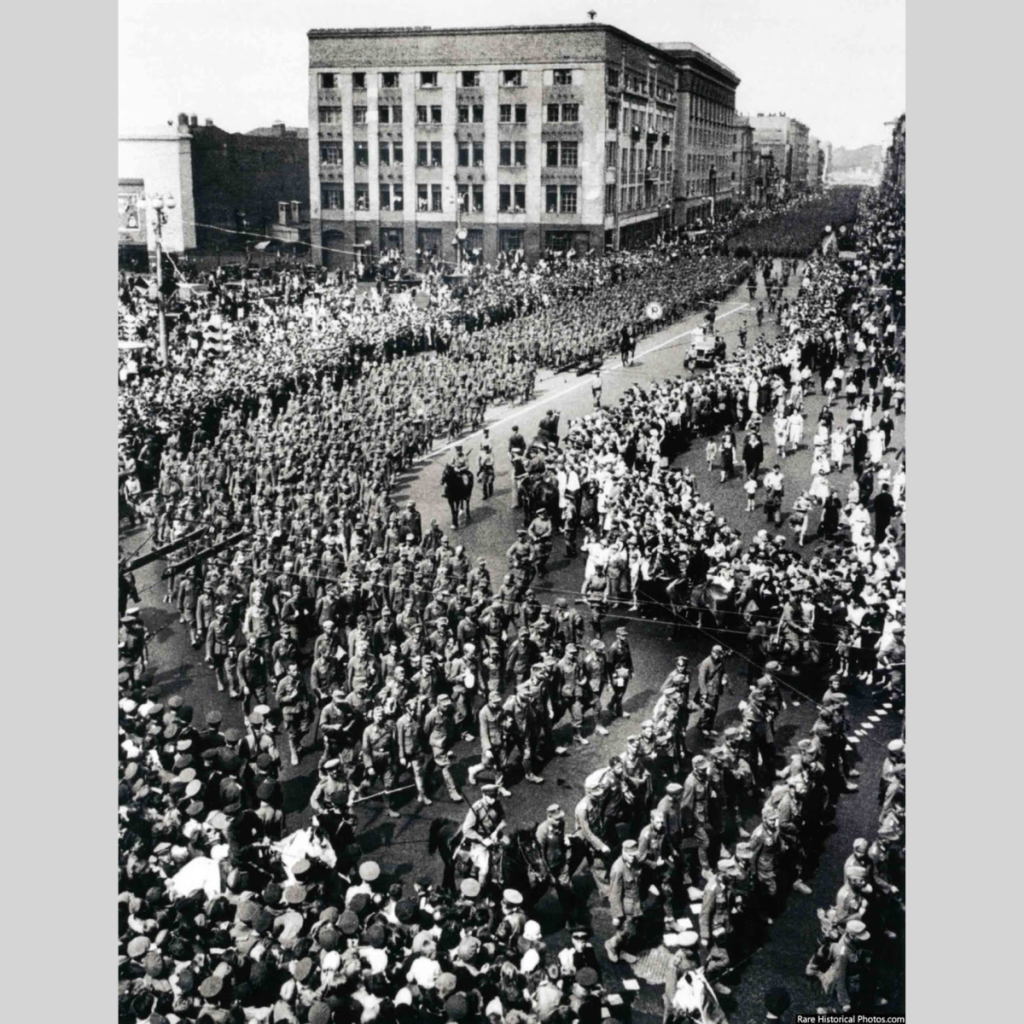
Parade of 57,000 German prisoners of war in the streets of Moscow. Under escort 1944.
In the summer of 1944 the Soviet Union launched Operation Bagration, a large-scale, complex offensive against the Nazi invaders in Belarus, Poland and the Baltic republics.
This vital Soviet offensive was launched just after Allied troops had landed in Normandy, and it is symptomatic of the lack of public knowledge about the war in the East that whilst almost everyone has heard of D-Day, few people other than specialist historians know much about Operation Bagration.
Operation Bagration (named after a Georgian prince in the war against Napoleon 130 years earlier) was not just one of the largest military offensives of the war, it was one of the most sophisticated.
On 19 June 1944, Red Army partisan units, operating behind German lines, attacked transport and other Wehrmacht supply lines; two days later the Soviets launched massive air attacks; and then on the 23rd (one day after the third anniversary of the German invasion) the Red Army moved forward under cover of darkness.

German prisoners, July 17, 1944.
Soviet advance caught the Germans by surprise. Once again, the Soviet technique of ‘maskirovka’ (deception) had worked. The Soviets pushed forward in powerful spearheads leaving enemy units isolated behind them – a tactic that was made all the more effective because of a tactically disastrous decision Hitler had made. The German leader had ordered the soldiers of Army Group Center to stand firm and inflexible in the face of any Soviet advance.
Hitler’s directive of 8 March 1944 had announced that ‘feste Plaetze’ (fortified places) should be the core of the German defense. The idea was that the Soviets would advance past these fortifications, which would, Hitler said, “fulfill the function of fortresses in former historical times”.
The commander of the German Ninth Army, General Jordan could scarcely believe the nature of the order he had been given. “Ninth Army stands on the eve of another great battle”, he wrote, “unpredictable in extent and duration… the Army believes that, even under the present conditions, it would be possible to stop the enemy offensive, but not under the present directives which require an absolutely rigid defense”.
“Hitler’s orders to hold firm were totally disastrous”, confirms military historian Antony Beevor. “He refused to allow his generals any flexibility or leeway which was totally contrary to all the precepts and the teaching of the German general staff… but because Hitler so distrusted his generals he wanted to control everything and that was basically the undoing of the German army”.
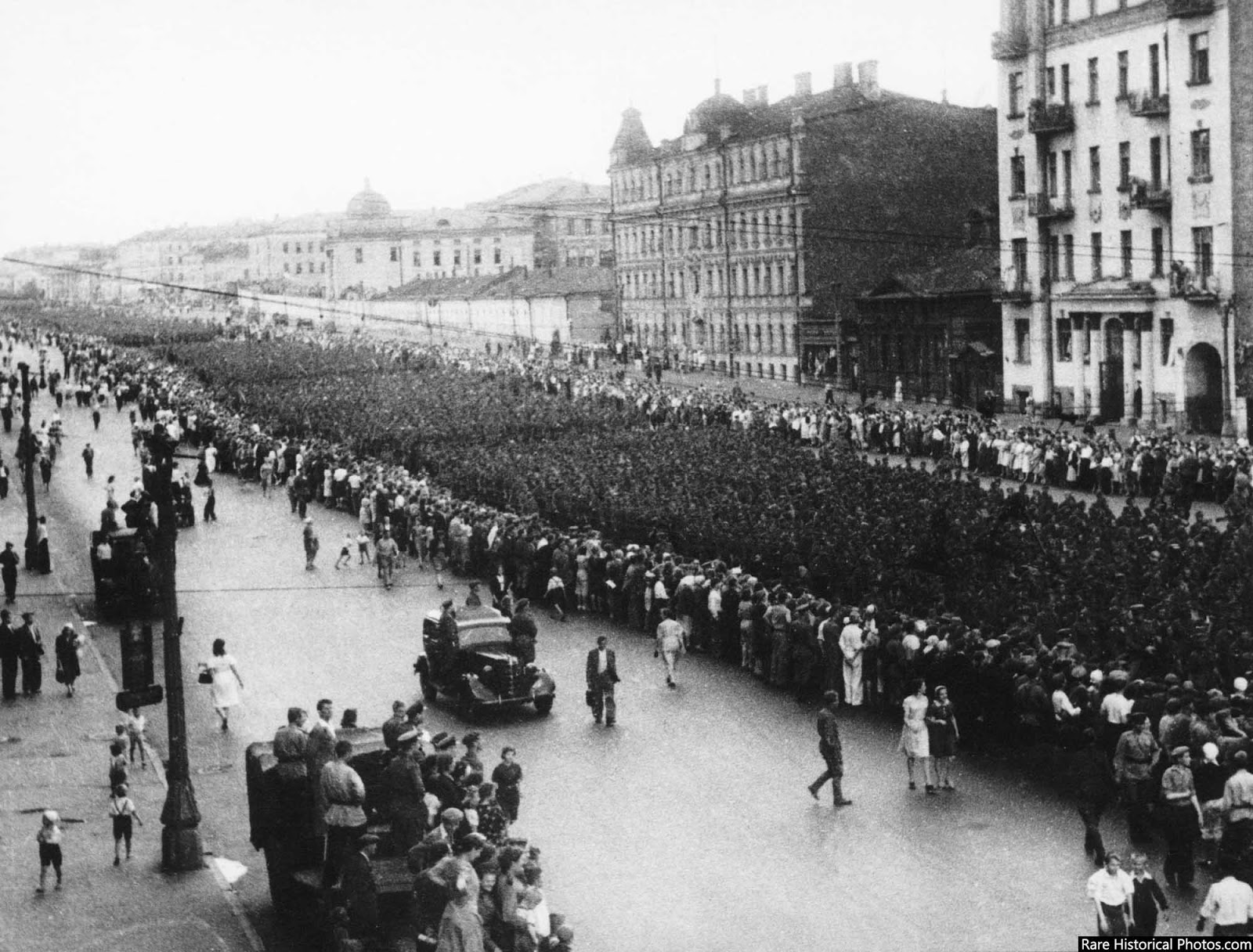
All these prisoners surrendered after “Operation Bagration”.
The operation resulted in the almost complete destruction of Army Group Centre, which lost all of the Fourth Army and most of the Third Panzer and Ninth Armies.
The defeat was as calamitous as any suffered by the German armed forces during the Second World War. By the end of the operation most of the western Soviet Union had been liberated and the Red Army had achieved footholds in Romania and Poland. German losses eventually numbered well over half a million men killed or wounded, even higher than the toll at Verdun in 1916.
The Germans lost 350,000 men, 160,000 prisoners died on the way to prison camps, 57,000 prisoners were paraded in Moscow. Operation Bagration was Hitler’s worst military defeat in WWII. It broke the Wehrmacht’s backbone and helped to overthrow Hitler’s “Reich”, which lasted barely more than a decade instead of the promised 1,000 years.
For their offensive operation the Red Army used 118 rifle divisions, 13 artillery divisions, 6 cavalry divisions, as well as 8 tank and mechanized corps. More than two million Soviet frontline and support troops took part.
Over one million tons of ammunition and supplies were needed. The Soviet troops were assisted by nearly 11,000 artillery pieces, 2,300 Katyusha multiple rocket launchers, 2,300 fighter planes, 1,800 Ilyushin Il-2 ground attack planes, 650 medium bombers and 430 night bombers.

Operation Bagration – the Soviet destruction of German Army Group Center – was, arguably, the single most successful military action of the entire war.

The defeat was as calamitous as any suffered by the German armed forces during the Second World War.

The Germans lost 350,000 men, 160,000 prisoners died on the way to prison camps, 57,000 prisoners were paraded in Moscow.
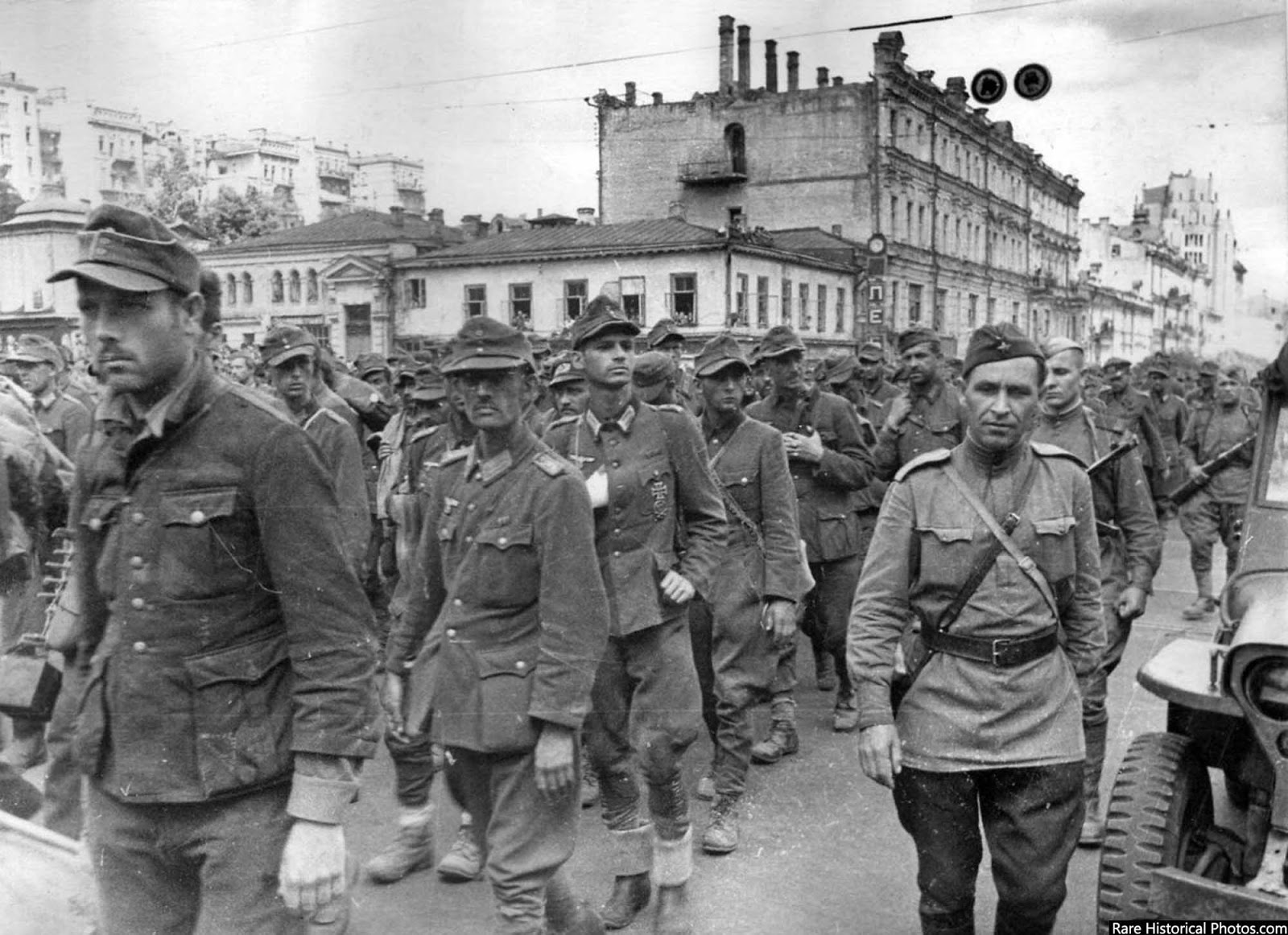
German losses eventually numbered well over half a million men killed or wounded, even higher than the toll at Verdun in 1916.
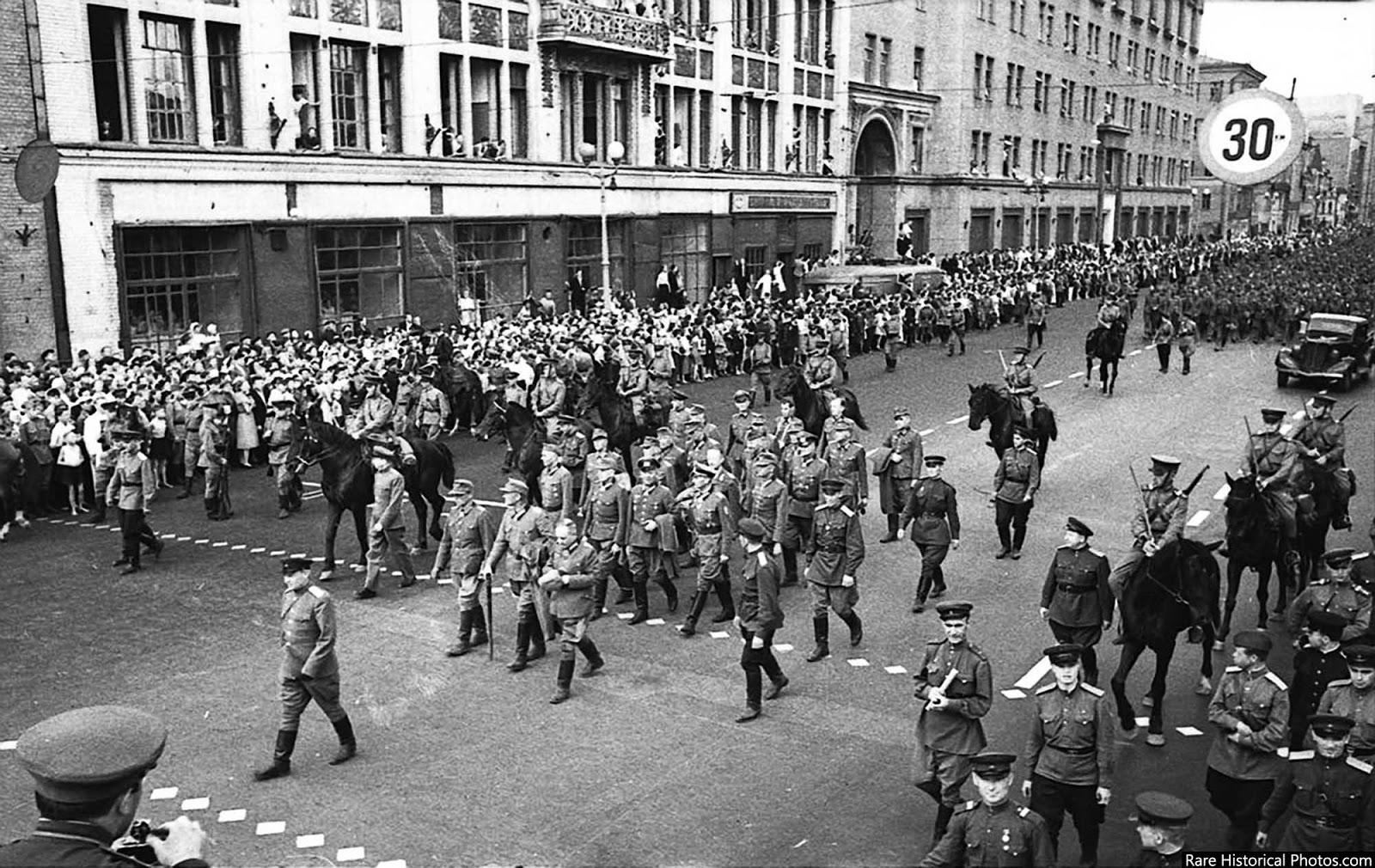
High ranking officers leading the parade.
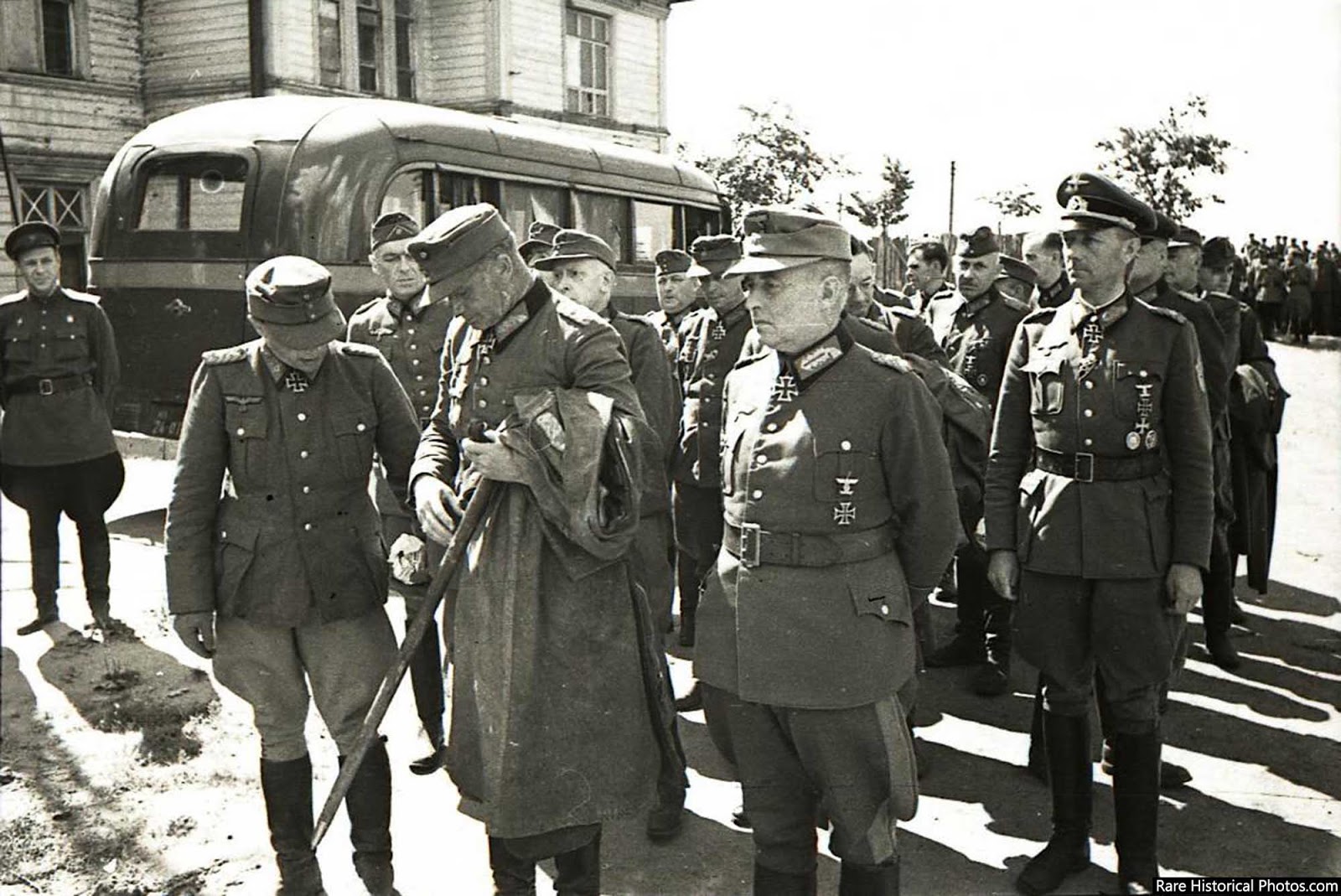
The operation broke the Wehrmacht’s backbone.

Most of these prisoners of war never returned to Germany alive.
